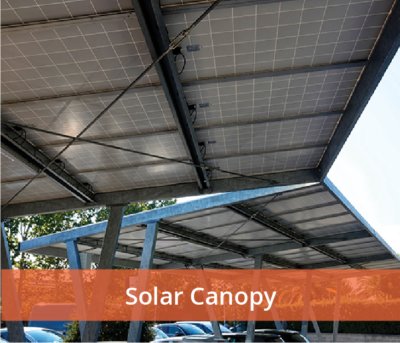How It Works
Every commercial system and installation is different. The size of your commercial system will be determined by roof, canopy, or land space that can be used for panels, your electricity needs, and your financial goals. Because of the variations in designing and installing systems, there will be a number of components potentially used. For example, the equipment used for a pitched roof is different than for a ballasted installation on a flat roof. Carport and ground installations require additional structures and cabling to connect to the meter.
The components required for a commercial solar system include the panels, an inverter power station, individual systems for cable management, mechanical mounting, and energy monitoring. The cost of the system will depend on the selection of the manufacturer, type, and quality of all components. District Energy will keep your goals in mind and consult with you to give you recommendations for the best combinations.
We will help you identify the best location for panels — solar can be installed on your roof, over your parking lots, or on vacant land.



Explanation of Net Energy Metering/Demand Charges
- Bucket 1 – A fixed monthly fee, the amount of which depends on the rate tariff you are on. This fee remains even after you go solar.
- Bucket 2 – Time of use charges. Commercial customers are charged based on the time of year and time of day that a given kWh is consumed. Rates are higher in summer vs. winter and higher in the afternoons/evening than in the middle of the night.
- Bucket 3 – Demand charges. The utility actually tracks usage in 15-minute increments, and the demand charge is based on the highest peak in a given month or quarter. The demand charge is often half of a commercial customer’s bill and sometimes even more!
When a business adds solar, it enters into a “Net Energy Meter” agreement with the utility company. This agreement states that the utility will credit the customer at the same rate it would charge the customer for a given kWh. For the sake of explanation, let’s assume that a business is open 5 days a week – Monday through Friday. On Saturday and Sunday, very little electricity is being used, but the solar system is creating power, that power is going back out into the grid, and the customer is being credited for the power it created. On Monday morning, staff shows up to work and turns everything on, the credit that was created over the weekend is used up before, and new electricity charges are billed. This give and take between kWh used and created is constant, hour-by-hour, day-by-day, and month-by-month.


